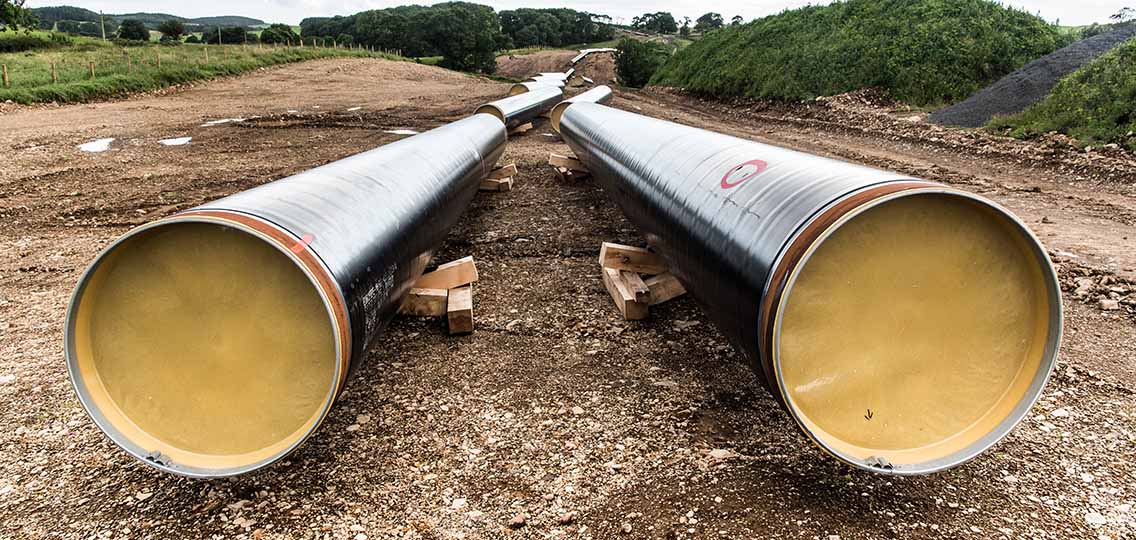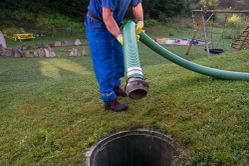

- Raising the pipe in the overflow at fieldlines full#
- Raising the pipe in the overflow at fieldlines series#
The drainline connects the tank’s terminus, which is opposite the. Starting at the home, begin your search for the septic tank lines. 20 feet away from the home, 100 feet away from wells and streams, 25 feet away from dry gulches, and 10 feet away from the land are all minimum requirements. Aero-Stream® has developed a product and process that will fix and restore any type of failed drainfield. Theleach field is about 5-10 feet away from the home. Besides, if it's anything like my other sink, stuff like hair and who know what else just collects in the space between the pipe and vanity top and seems like a haven for bacteria. The drywell and mound designs are subject to the same failure mode over time they eventually become impermeable so that the sewage outflow from your septic tank cannot be absorbed into the ground.įortunately, you do not have to replace your drainfield to return your septic system to an operational condition. I would like to plug these overflow holes in the drain pipe since my integrated bowl cultured maple vanity top does not have an overflow hole. The aerobic bacteria are far more efficient, processing up to 90% of the solids in the septic tank versus an anaerobic system which processes only 40% of the solids in the tank and allows 60% to flow to the drainfield, resulting in biomat clogging over time. Aerobic Treatment Unit (ATU):Īn aerobic treatment unit introduces oxygen into any anaerobic septic system, allowing aerobic bacteria to flourish and convert the system from anaerobic to aerobic. Homeowners must post a bond for potential spills and have to have a contract with an approved sludge hauler. Some schools and other public properties use this system when sewers are not available and no suitable site exists for an on-site septic system. Holding tanks must be routinely pumped to prevent overflows or back-ups into the house. It is most commonly used as a temporary measure to allow continued occupancy of a house until a more permanent fix can be arranged. Holding Tank:Ī holding tank is a self-contained watertight sewage tank which has no outlet for effluent. On sloping sites the down slope area below the mound must remain protected. Drainage around the mound site is critical if the system is to function properly. Septic tank effluent is pumped in controlled intervals through the pipes to insure uniform distribution throughout the bed.įinal treatment of the effluent occurs as it filters through the sand and into the natural soil.


Within the sand fill is a gravel bed with a network of perforated distribution components, typically PVC pipes.
Raising the pipe in the overflow at fieldlines series#
The drywell is typically a secondary chamber added in series after the septic tank or cesspool which allows only the clarified effluent from a septic tank or the gray water to enter. Drywell (or Seepage Pit):Ī drywell is similar in design to a cesspool with an added layer of crushed stone around the outside diameter to increase the absorption area. The pump is activated intermittently by use of a mechanical float device in the chamber where the pump is located. Pressure Distribution Drainfields:Ī pressure distribution drainfield is installed when the site conditions do not allow the drainfield to be installed at a lower elevation than the septic tank outlet, preventing the effluent to flow to the drainfield by gravity.Pressure distribution systems are similar in design to a gravity field and differ only by the use of a mechanical effluent pump to distribute the effluent from the pumping chamber or settling chamber to the drainfield. The size of the drainfield depends on the estimated daily wastewater flow (generally based on the number of occupants), soil type, and soil conditions. Maximum effectiveness of the final treatment occurs when the soil is dry and permeable. for confirming that the Sanitary Sewer Overflow Field Report is completed and that.
Raising the pipe in the overflow at fieldlines full#
Refill the hole with water the next day and time how long it takes for the water to seep away from 75 full to 25 full. Fill the hole with water and allow it to seep away overnight. Q 1 0 0 1 0 0 cm 1 1 1 rg 0 0 0 RG 0 w BT 0 0 0 rg /Helv 10 Tf 1 0 0 1 1122.393 21.The undisturbed soil filters out the remaining solids in the effluent which are then processed by anaerobic bacteria transported from the septic tank in the effluent.The anaerobic biochemical process cleans the effluent before it reaches the groundwater. way and/or private property because sewer lines are blocked, clogged. Dig a 300mm square hole to a depth of 300mm below the proposed invert level of the drainage field.


 0 kommentar(er)
0 kommentar(er)
